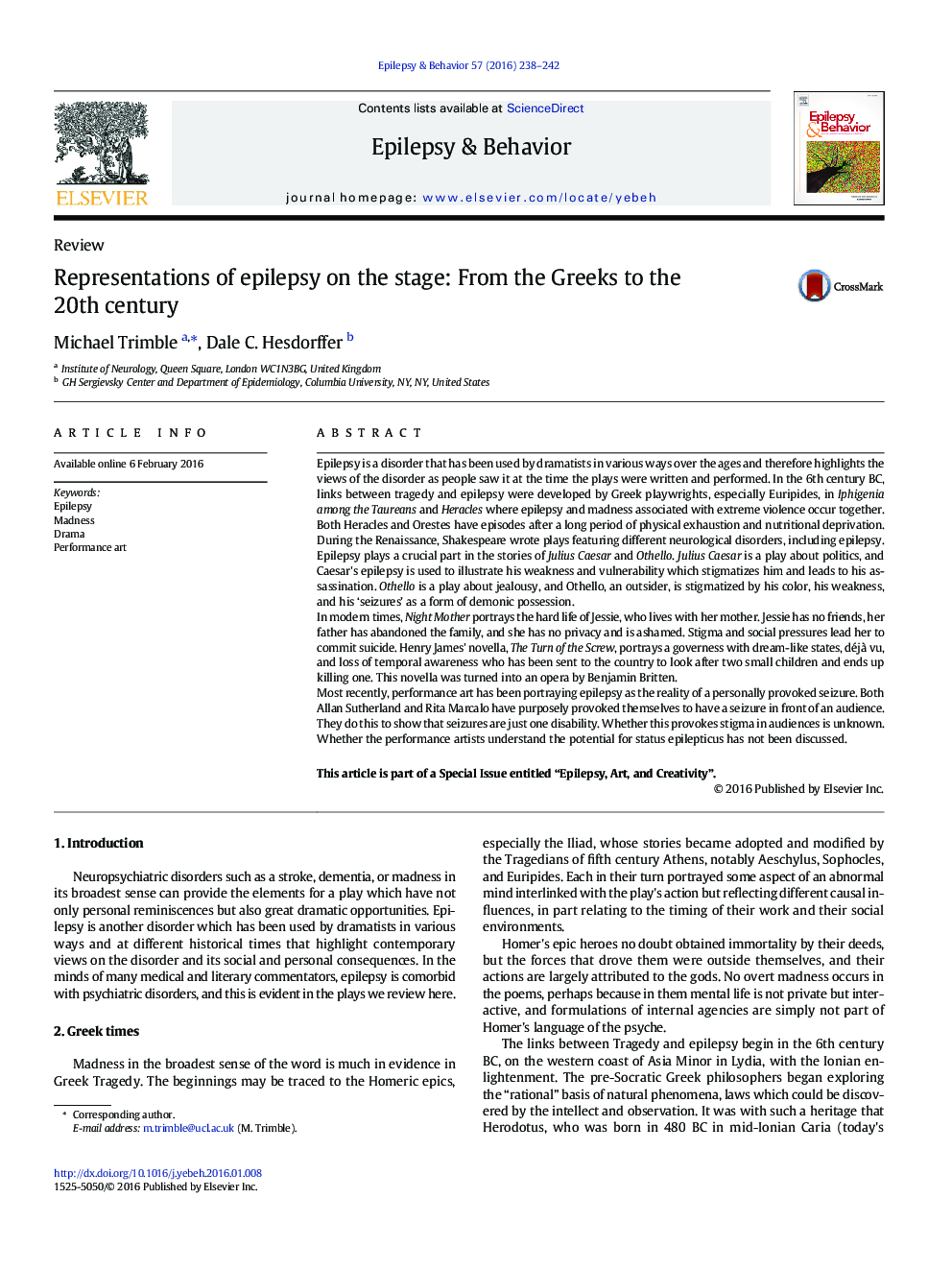| کد مقاله | کد نشریه | سال انتشار | مقاله انگلیسی | نسخه تمام متن |
|---|---|---|---|---|
| 3049569 | 1185878 | 2016 | 5 صفحه PDF | دانلود رایگان |
• Playwrights from the Greeks onward have used epilepsy dramatically and as metaphor.
• Epilepsy is linked with madness in Greek plays and vulnerability in Shakespeare.
• Modern theater depicts epilepsy in the context of stigma and social pressures.
• Performance art aimed at provoking a seizure may show epilepsy as scary and stigmatizing.
Epilepsy is a disorder that has been used by dramatists in various ways over the ages and therefore highlights the views of the disorder as people saw it at the time the plays were written and performed. In the 6th century BC, links between tragedy and epilepsy were developed by Greek playwrights, especially Euripides, in Iphigenia among the Taureans and Heracles where epilepsy and madness associated with extreme violence occur together. Both Heracles and Orestes have episodes after a long period of physical exhaustion and nutritional deprivation. During the Renaissance, Shakespeare wrote plays featuring different neurological disorders, including epilepsy. Epilepsy plays a crucial part in the stories of Julius Caesar and Othello. Julius Caesar is a play about politics, and Caesar's epilepsy is used to illustrate his weakness and vulnerability which stigmatizes him and leads to his assassination. Othello is a play about jealousy, and Othello, an outsider, is stigmatized by his color, his weakness, and his ‘seizures’ as a form of demonic possession.In modern times, Night Mother portrays the hard life of Jessie, who lives with her mother. Jessie has no friends, her father has abandoned the family, and she has no privacy and is ashamed. Stigma and social pressures lead her to commit suicide. Henry James' novella, The Turn of the Screw, portrays a governess with dream-like states, déjà vu, and loss of temporal awareness who has been sent to the country to look after two small children and ends up killing one. This novella was turned into an opera by Benjamin Britten.Most recently, performance art has been portraying epilepsy as the reality of a personally provoked seizure. Both Allan Sutherland and Rita Marcalo have purposely provoked themselves to have a seizure in front of an audience. They do this to show that seizures are just one disability. Whether this provokes stigma in audiences is unknown. Whether the performance artists understand the potential for status epilepticus has not been discussed.This article is part of a Special Issue entitled “Epilepsy, Art, and Creativity”.
Journal: Epilepsy & Behavior - Volume 57, Part B, April 2016, Pages 238–242
